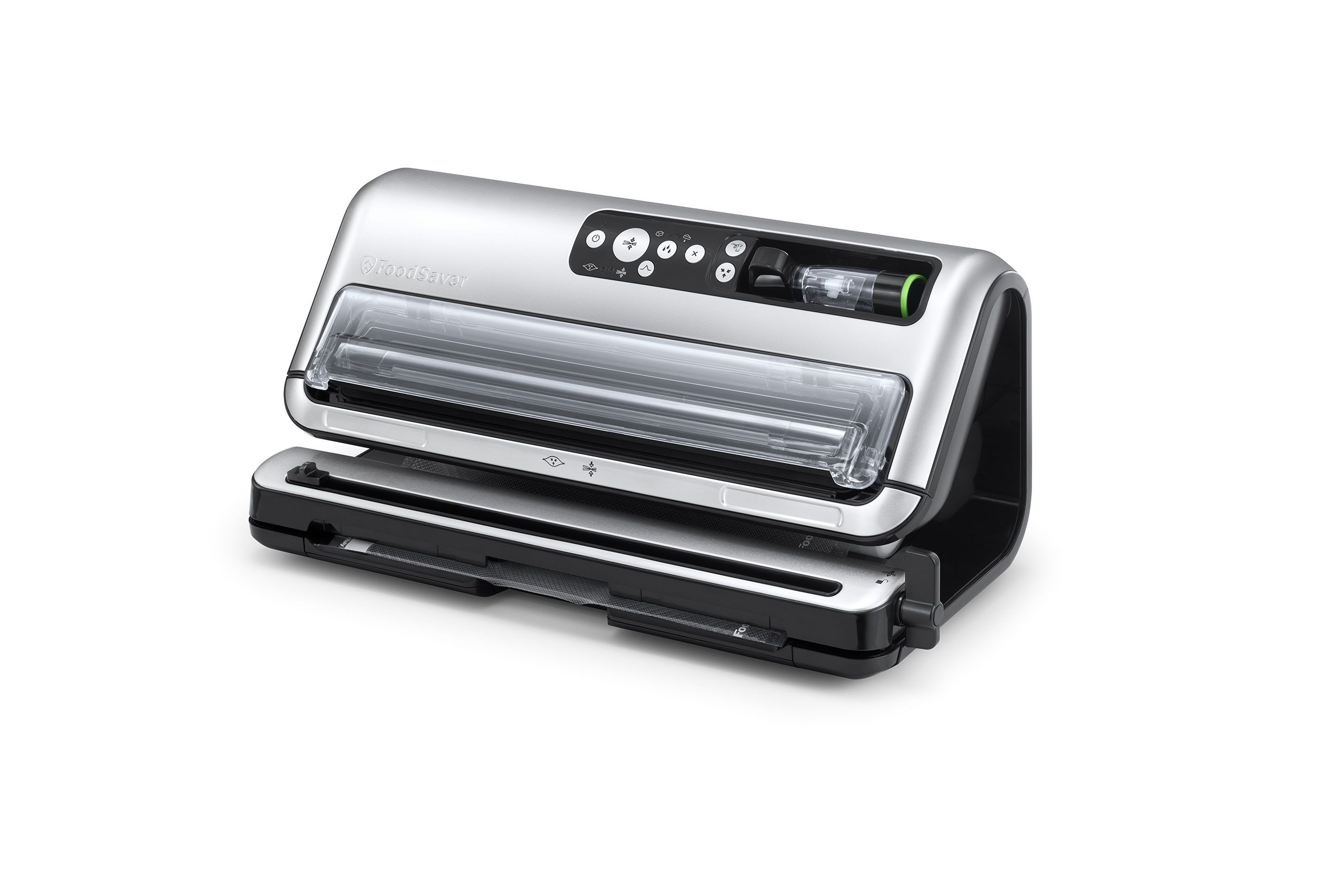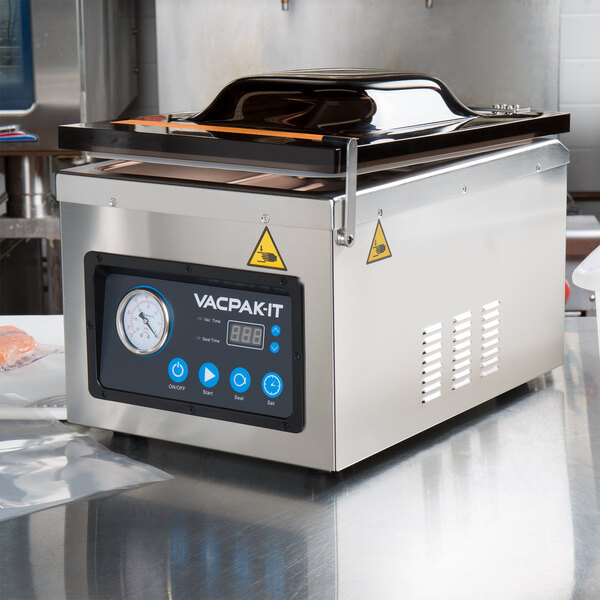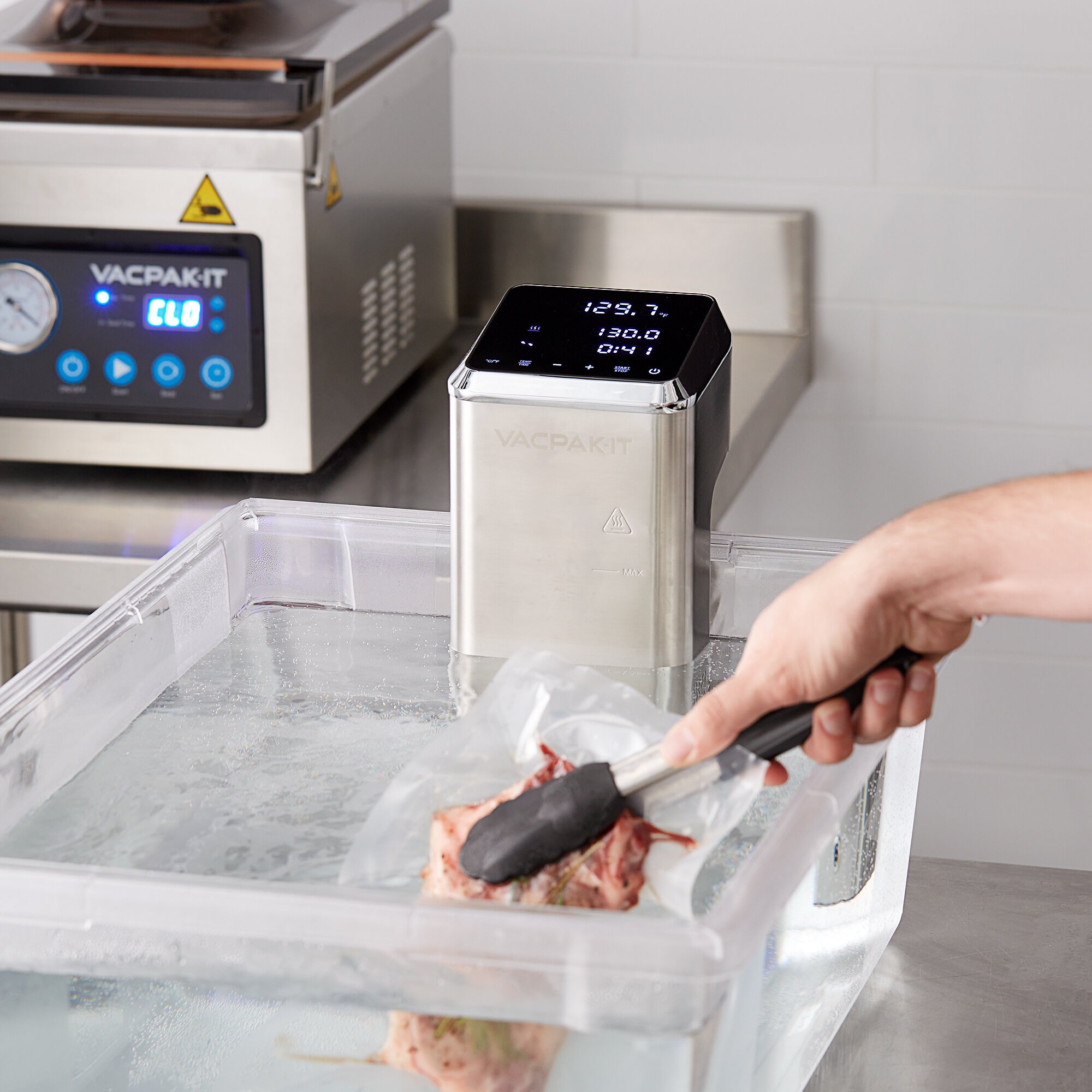While not brand new, sous vide has become the latest thing to fascinate and enthrall the world of amateur cooking. It’s been in kitchens since legendary Chef Joel Robuchon helped bring it from the food packaging industry into the French restaurant scene in the 1980’s, and then made landfall in the States in the early 2000’s with the help of (also legendary) Chef Thomas Keller. In fact, Keller’s 2008 publication Under Pressure (the English translation of the words sous vide) can do a far better job of explaining it than I can. However, Under Pressure is a book mainly directed towards other professional chefs. At the time, sous vide was a technique that wasn’t around when most career chefs were taught, so having done his own perfection-by-experimentation training, Keller offered fellow professionals a guide on how to utilize the technique. But it remains this mystifying thing to most amateur cooks, which naturally breeds interest. So… here we are.
Everything that follows is my personal take — not definitions or explanations I’ve taken from anywhere else:
Sous vide is a cooking technique, whereby you take something that’s been vacuum-sealed in a plastic bag, and submerge it in constantly agitated water, that is set to an exact temperature, for a certain amount of time. Okay.
Simple enough to describe, but lots to unpack here.
First of all: what’s the point? At first glance it seems a little masturbatory, but the purpose of the method is twofold. On one hand, by cooking something in a meticulously heat-controlled environment, you ensure the temperature to which something will be cooked. That’s why sous vide is such a popular technique in fine-dining restaurants, where continuity and consistency are of paramount importance. Let’s take cooking meats, for example: if you sous vide a pork loin at 145ºF (a popular temperature for that cut to be cooked) for twelve hours, it will never cook above 145ºF. Or, by contrast, if you figured out that searing that pork loin will raise the internal temperature by ten degrees, then instead, you can sous vide it to 135ºF, take it out of the bag, sear it, and then you have perfectly cooked, seared pork loin.
Additionally, sous vide allows you to merge and infuse flavors more intensely than most other techniques. Not only does the air-tight nature of the packaging insure this, but the pressure and heat of the water, actually receptively forces flavors of certain things into one another — hence, under pressure. It basically combines the elements of a pressure cooker and a crock pot, into a plastic bag.
Next thing on your mind is probably, “how the hell can you accomplish all these things?” The answer is, with the right equipment. Sous vide is not unique, in that it’s something professional chefs can do that the average home cook cannot, simply because of access to appliances and equipment of a certain ilk. The first thing that’s needed for sous vide is a vacuum-sealer or cryo-vac machine. It’s important to note, that the cryo-vac machines used by professional chefs are different from (for example) the FoodSaver that I have in my home kitchen.
When it comes to most commercially-available vacuum seal machines, you put whatever it is you’re trying to store into a specifically designated plastic bag, put the mouth of the bag onto a sealing strip, close the “lid”, and the machine sucks out all the air. Now, there are two specific ways in which this can be insufficient. One, is that if there’s liquid in the bag, the machine inhales the liquid. As a result, you’ll lose a great deal of that liquid, and (in addition to making a mess of your machine) the bag won’t seal. Two, is that if there are air pockets that are air-locked in the bag by the food itself, blocking the air from the mouth of the bag, that air is stuck there and you have air pockets (sorta negates the point, right?). Air pockets are bad because they aren’t conducive to infusing flavors, and they’ll also cause the bag to float in the water.

Industrial cryo-vac machines operate differently. When you close the lid on such a machine, instead of just sucking air out, it actually inflates the bag, and, based on the air pressure it can put into the bag, gauges the volume of the contents of the bag, and then sucks out the difference. So, in the event of liquid, as long as the elevation of the liquid is below the level of the sealing strip, it will stay in the bag. And since the bag is inflated to max volume, there’s no possibility of air pockets being unreachable, and sealed in.

Now this technology is awesome on its own, if only for the purpose of food storage. Bacteria growth requires one of two things: ideal temperature (what food safety standards deem the “danger zone”: between 42º-140ºF) or oxygen exposure, and cryo-vac-ing eliminates the excess oxygen. Meats that are cryo-vac’ed keep 2-3 times longer with regular refrigeration than if they were just wrapped in plastic wrap. Also, you can cryo-vac, let’s say reduced stock or fruit juice, then lay it on a flat surface and put it in the freezer, and you’ll have flat, easily store-able sheets of frozen liquid (a well-executed freezer containing vac-sealed liquids will look a lot like a bookshelf). Not to mention, the technique is perfect for marinating things.
Interestingly enough, these machines are prohibited by most major city’s health departments. I’ve had many conversations with many people about why this is — both in the industry, and not — and the best I can tell you is it has something to do with a HACCP (Hazard Analysis Critical Control Point) plan. Basically, according to the department of public health, something about cryo-vac-ing your own food, to then distribute it to your clientele, is deemed potentially dangerous. Really I think it’s to keep businesses from reselling previously opened goods as brand new, without a permit or license to do so. Either way, most kitchens of a certain repute or production volume still have them. However, in those kitchens, once a health inspector arrives, it’s one of the first things that is removed from the kitchen, and taken away from where the health inspector has the right to look. In fact, when I was taking the two-day class needed in order to get my health dept. certificate in a particular major US city, I met a cook who had worked at one of the city’s 3-star restaurants (and at the time was one of the top ten Michelin restaurants in the world), and said that every cook in that kitchen had pre-determined responsibilities for when the health inspector arrived, and that two cooks were responsible for moving their vacuum sealer into the back of the office with a black garbage bag over it.
But anyway, back to sous vide.
This vacuum-sealing is only half of the equation. I mean, yes, you can put something in a cryo bag and toss it in boiling water to cook it. In fact, I once worked at a place where the prep for one menu item called for vacuum-sealing slices of butternut squash, grated fresh turmeric, shallots, chili pepper and olive oil, and leaving it in one of the boiling pots kept on the hot line for 20-30 minutes until they were tender. Then we’d take them out, put the bags in the cooler, and that’s where they’d stay until they were needed for service: fully cooked, fully flavored, sous vide butternut squash! “But water boils at 218ºF.” you might be saying. “What if I wanted to cook something at 118ºF?” Enter another fun kitchen toy called, a circulator.

A circulator is essentially if a temperature-monitoring water heater had a baby with a miniature outboard engine. Originally, circulators were used for scientific lab research. But eventually, some French guys realized that in addition to monitoring cellular growth under specific temperature conditions, they could also cook some shit with it too!

A circulator allows you to program the temperature to which you want the water to be heated (and maintained), monitor the temperature it actually is, and for how long you want it to hold that temperature. All the while, it is agitating, or circulating the water, which makes sense to me why that’s important, but I don’t have the wherewithal to explain.
As for how this might be used in a professional capacity, I worked somewhere where we would fill cryo bags with raw duck legs, halved heads of garlic, bay leaves, thyme, cloves and a shit-load of rendered duck fat. After sealing them, we’d leave them in the circulator to sous vide overnight at like, 175º. First thing the next day, I’d fill a prep sink with ice water, and drop the duck bags in, after which point, we’d just store them in the bags in the fat. For service/pick-up, we’d just open a bag, re-warm a leg in some of the fat from the bag, and then sear it for crispy skin, and voila: exquisite duck confit.
Another fun technique that an old coworker told me about having used to cook fillet mignon while working at a different restaurant: They’d sous vide beef fillets to perfect medium-rare (110ºF, by their standards), and hold them at that temperature for service. When there was an order to be picked up, they’d dip the fillet in liquid nitrogen for thirty seconds, then in the deep fryer for thirty seconds, so the fryer imparted an all-around crisp exterior (what’s known as a Maillard reaction), but thanks to the liquid nitro bath, it wouldn’t cook the steak beyond the perfect temperature. Fun stuff!
Is this circulator/vacuum-sealer combination of tools for a particular technique something that you or any cook needs to have in their kitchen? Not at all. Is it a fun technique to mess around with? Hell yeah, it is! Look, throughout history and across the globe, new technology has allowed for previously impossible innovation, and the culinary world is no exception. Does the partnership of a vacuum-sealer and a circulator allow you to do things that were impossible fifty years ago? You bet it does. But food was cooked just fine before such things were incorporated into the fabric of modern fine cuisine — and it continues to be today.
If you’re an advanced, adventurous home cook, who’s looking for a new technique to play around with, then absolutely have at this one. But if you’re just someone who tends to want to get up to your elbows into whatever cooking fad everyone’s talking about, this might be one you’re better off keeping in the bag.
